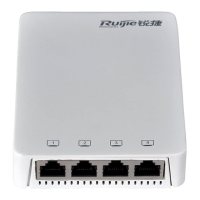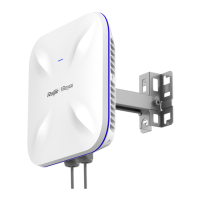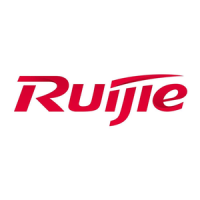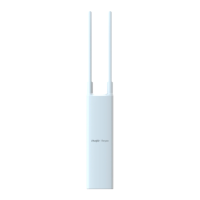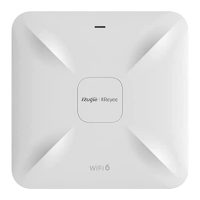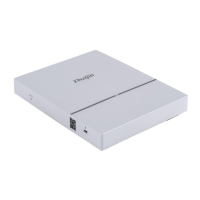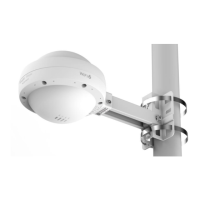Configuration Guide Configuring LLDP
Different organizations, such as the IEEE 802.1, IEEE 802.3, IETF and device suppliers, define specific TLVs to advertise
specific information about devices. The organizationally unique identifier (OUI) field in a TLV is used to distinguish different
organizations.
Organizationally specific TLVs are optional and are advertised in an LLDPDU selectively. Currently, there are three
types of common organizationally specific TLVs: IEEE 802.1 organizationally specific TLVs, IEEE 802.3
organizationally specific TLVs, and LLDP-MED TLVs.
The following table describes IEEE 802.1 organizationally specific TLVs.
Indicates the VLAN identifier of a port.
Port And Protocol VLAN ID TLV
Indicates the protocol VLAN identifier of a port.
Indicates the VLAN name of a port.
Indicates the protocol type supported by a port.
Ruijie LLDP-compliant switches do not send the Protocol Identity TLV but receive this TLV.
IEEE 802.3 organizationally specific TLVs
The following table describes IEEE 802.3 organizationally specific TLVs.
MAC/PHY Configuration//Status TLV
Indicates the rate and duplex mode of a port, and whether to
support and enable auto-negotiation.
Indicates the power supply capacity of a port.
Indicates the link aggregation capacity of a port and the
current aggregation state.
Indicates the maximum size of the frame transmitted by a
port.
Ruijie LLDP-compliant devices support advertisement of IEEE 802.3 organizationally specific TLVs.
LLDP-MED TLV
LLDP-MED is an extension to LLDP based on IEEE 802.1AB LLDP. It enables users to conveniently deploy the Voice Over
IP (VoIP) network and detect faults. It provides applications including the network configuration policies, device discovery,
PoE management, and inventory management, meeting requirements for low cost, effective management, and easy
deployment.
The following table describes LLDP-MED TLVs.
LLDP-MED Capabilities TLV
Indicates the type of the LLDP-MED TLV encapsulated into an LLDPDU and
device type (network connectivity device or endpoint device), and whether to
support LLDP-MED,.
Advertises the port VLAN configuration, supported application type (such as
voice or video services), and Layer-2 priority information.

